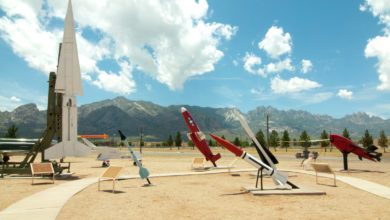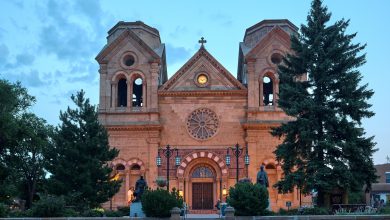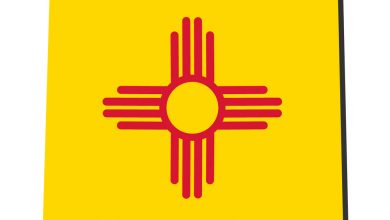New Mexico’s Gorgeous Vistas, Strange Topography, and Massive Caves
5 Must-See attractions in our state
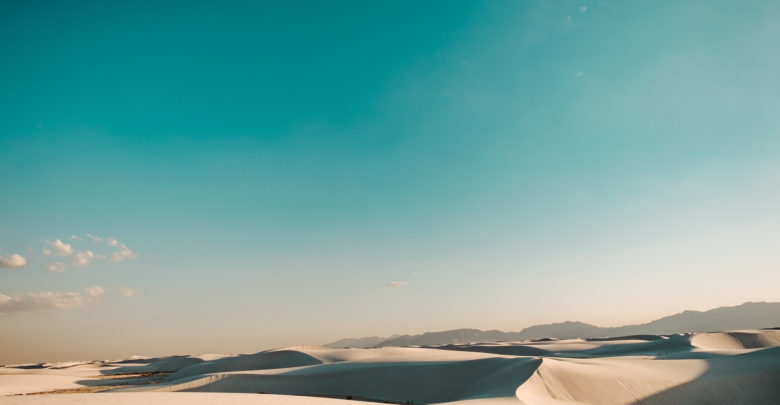
The tourism industry is alive and well in New Mexico, and there’s something for everyone in the Land of Enchantment. There are historical museums, art galleries, resort casinos, national monuments, national parks, skiing and more. If you love history, art, and culture and/or the outdoors, New Mexico should be your next go-to spot for vacation or for a long weekend or getaway. Here are five attractions you’ve just got to see when you visit!
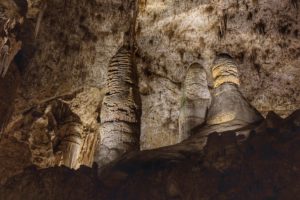
Carlsbad Caverns National Park
Carlsbad Caverns National Park is located in the Guadalupe Mountains in southeastern New Mexico. The largest part of the park is the underground caves, or caverns, that have been in this area for thousands of years. Visitors to the park can either hike into the caves on their own or access the natural entrance just past the Visitors Center. There’s even an elevator available for guests who want to board it and descend from the Visitors Center down to the bottommost accessible part of the caverns.
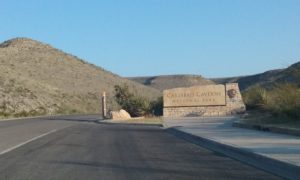
The park includes a large cave chamber called the “Big Room,” which is a natural limestone cave that measures almost 4,000 feet long, 625 feet wide and over 250 feet high at its highest point. The “Big Room” is the third-largest chamber on the North American continent and the seventh-largest chamber on earth.
Carlsbad Caverns National Park is located approximately 18 miles southwest of the city of Carlsbad, New Mexico. About 2/3 of the park has been designated as a protected wilderness area. This is to ensure the preservation of the caverns, as well as the protection of the land and the wildlife that inhabits the land. For more information, visit the park’s official site at www.nps.gov/cave.
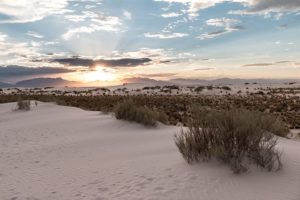
White Sands National Monument
Who doesn’t love the draw of huge sand dunes? You can play for what seems like days in the warm white sand that stretches for miles and miles.
White Sands National Monument, located in south-central New Mexico, is home to the largest white sand (gypsum) dunes field in the entire world. The dunes of White Sands National Monument are located at the northern end of the Chihuahuan Desert in a valley called the Tularosa Basin. The monument ranges in elevation from 3,890 feet (or 389 stories high) to 4,116 feet (or more than 410 stories high).

There are about 275 square miles of gypsum dunes located in this area—115 of which lie within the boundaries of White Sands National Monument. The remaining 160 square miles of dunes are located on land owned by the United States military and are not accessible to the public. The dune field at White Sands National Monument is home to some very active dunes that move in a northeasterly direction as much as 30 feet each year. Other dunes in the area are more stable and move very little.
The gypsum that forms these breathtaking dunes is originally formed in the western part of the monument from an ephemeral lake whose mineral content is very high. As the water from the lake evaporates, minerals are left behind that form gypsum deposits. These deposits are transported by the wind, over time, forming the magnificent white dunes.
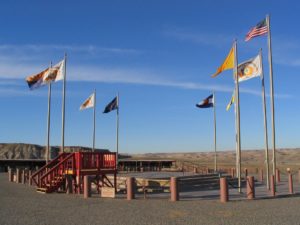
Four Corners National Monument
Have you ever been in four places at one time? You can do exactly that at Four Corners National Monument, but it’s not a magic act or illusion. At Four Corners National Monument, visitors can sit (or stand) in the very spot where four different states come together—New Mexico, Colorado, Utah, and Arizona. It’s the only place in the United States where four different states form a quadripoint.
The Four Corners Monument marks this quadripoint in the Southwestern United States where the four states meet. The monument further marks the boundary between two different Native American governments—the Navajo Nation and the Ute Mountain Ute Tribe Reservation. The Navajo Nation maintains the Four Corners Monument as a tourist attraction. For information about the monument, visit http://www.mesaverde.com/fcmonument.htm
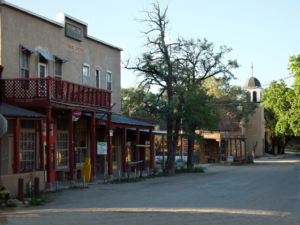
The Ghost Town of Cerillos
The old abandoned ghost town of Cerillos is located about 28 miles south of Santa Fe, and the lore surrounding the area is full of legends. Mining has taken place in the area for hundreds of years. For many Indian people, turquoise has a religious significance, and the nearby mountain—Mount Chalchihuitl—is known for having contained lots of turquoise. Stone tools that have been found in the area seem to confirm this. Before 1879, gold mining in Cerillos when Colorado miners came to the area and struck it rich.
Afterwards, Cerillos became the center of the mining industry in the surrounding area. The towns of Golden and Madrid were included in that area that yielded lead, coal, gold, silver and copper. Stop by the old ghost town for a visit, as it has several shops and galleries, as well as riding stables. Cerrillos Hills State Park has more than five miles of hiking trails for outdoor enthusiasts to enjoy, and the Cerillos Turquoise Mining Museum makes for an interesting afternoon with its hundreds of authentic artifacts from the Cerrillos Mining District. For more information about this fascinating ghost town, visit www.newmexico.org.
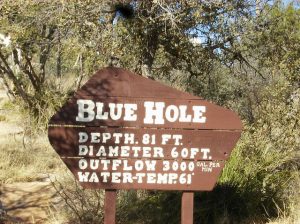
The Blue Hole at Santa Rosa
In the warmer months of the year, visitors to Santa Rosa can go for a swim in the natural spots and deep swimming holes. Blue Hole looks like a giant blue gem right in the middle of the desert. It was once called Blue Lake and is one of seven lakes connected by a vast water system underground. The most “magical” thing about this deep swimming hole is that it is always full of water, despite being located in an area of very little rain. Almost 80 years ago, Blue Hole became a National Fish Hatchery. Then in the 1970s, it grew into the Blue Hole Recreation Area. Then it became the Blue Hole Dive and Conference Center. Blue Hole is located midway between Albuquerque and Amarillo. Because of this, it’s within a two-hour drive of a majority of most residents of New Mexico.
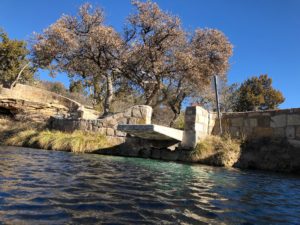
Blue Hole is full of beauty. Its water is clear; visibility is almost 100 feet. It’s been said that Blue Hole is never the same lake twice, and it’s true because the water completely renews itself every 6 hours. The temperature of the water—a cool 62 degrees—never changes. The watering hole is 82 feet deep, and it’s a favorite spot among scuba divers because of its depth and because of its temperature. It’s quite the beauty to behold, even if you decide to skip the scuba diving. For more information on this beautiful New Mexico attraction, visit www.santarosabluehole.com.

